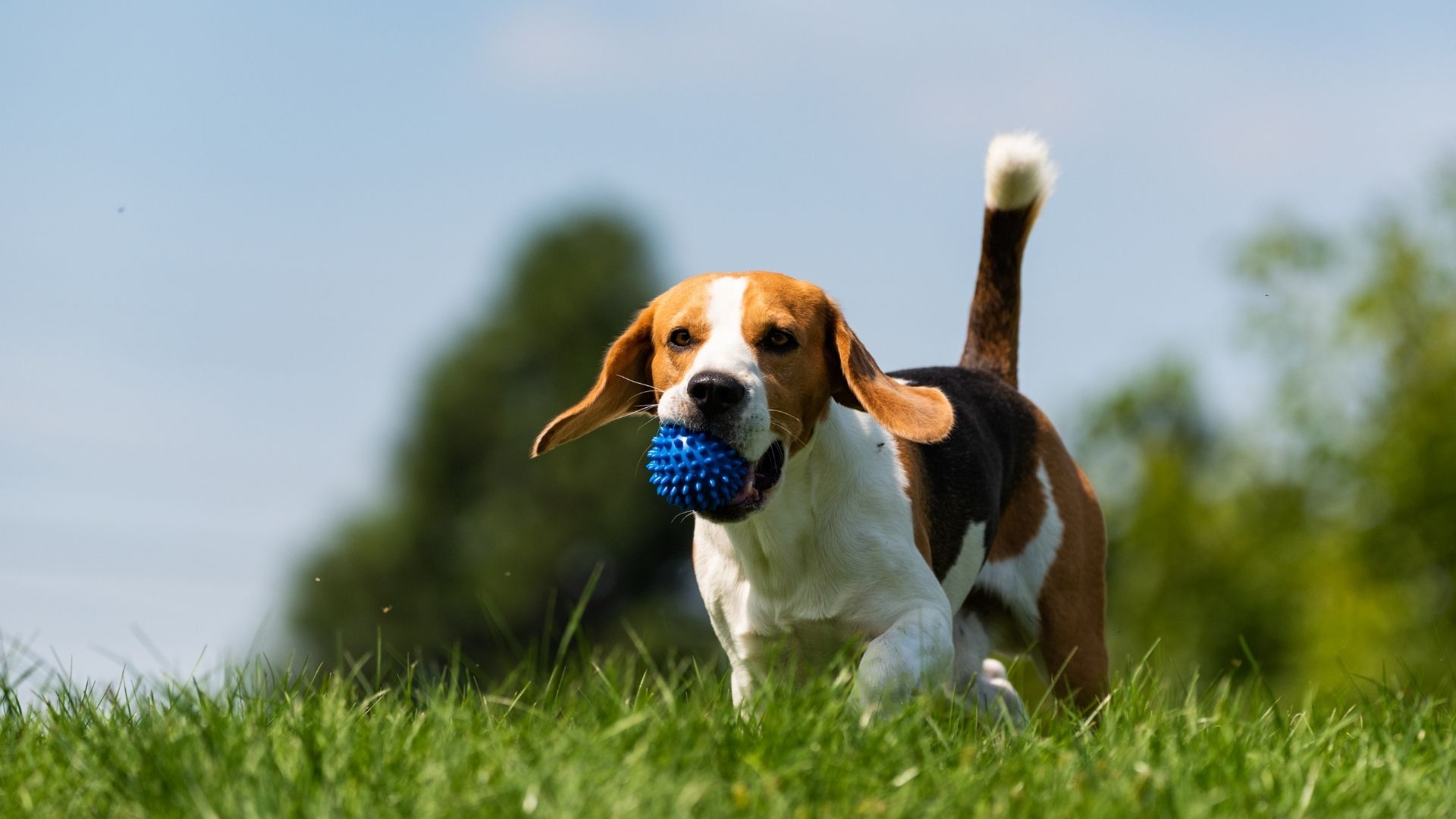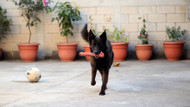Puppies and dogs chew for a variety of different reasons. Puppies will use chewing as a way to explore and get to know things around them.
As they are growing and going through the teething stage puppies use chewing as a way to smooth and calm sore gums as they lose their baby teeth and the adult teeth start to come through.
Adult dogs chew to keep their jaw strong and as a way to keep teeth clean.

Chewing can also help to alleviate boredom, calm an anxious dog, draw attention from their owners or simply relax a dog.
Dogs who are hungry or on a calorie-controlled diet may also chew on things in the hope that it may help calm their appetite.
Chew toys come in a variety of shapes and sizes and can be matched to a dog’s different needs. When selecting chew toys keep in mind the size of your dog, the age of the dog and the dog’s chewing abilities.
A larger dog with a stronger jaw will need something quite different to a small dog with a more delicate jaw.
Likewise, with size, too big a toy for a small dog will often leave them frustrated at not being able to get their mouth around the chew and the toy will go unused.
Too small a toy for a large dog may prove a danger to the dog, a toy designed for a small dog is not built to take the pressure of a strong jaw, and if too small is at risk of being swallowed.
Toys that are purchased for puppies are often only designed for use in dogs up to nine months of age at which stage upgrading to a larger or stronger chew toy is recommended.
Shop Popular Dog Treats
Get into the habit of checking your dog’s chew toys on a regular basis. With strong teeth and determined mouths, no chew toy is ever truly indestructible.
Look for areas of wear and tear on the toy, pieces of the toy cracking or coming away from itself, and anything which may become hazardous to the dog.
If toys are left outside in the elements they are more likely to perish than a toy kept inside so keep this in mind as well.
If you do see damage to a chew toy the best option is to dispose of it rather than face the problem of your dog being injured by it.
Types of Dog Chew Toys
Shapes and Sizes
- Chew toys come in a variety of shapes and sizes, depending on what you are looking for.
- Puppy Chew Toys are designed to help ease those teeth through and soothe sore gums.
- For the exploring mind and mouth, there is the option of different tastes, shapes and textures in puppy chew toys.
- When selecting chew toys for a puppy have a few toys to use with the puppy, generally, only offer them one or two at a time and then swap for another toy the next day.
- In doing this the puppy is less likely to lose interest in the toys and keep working at them for longer. A good strong synthetic bone will keep a puppy's interest going well.
- Always try to supervise your dogs while they are using chew toys.
- If you have several dogs with chew toys at the same time, observe their behaviour, some dogs may feel it is a competition and try to demolish a chew toy, others may be intimidated out of their chew toy by another dog.
- If this happens try to let the dogs relax with their chew toy in different areas.
- Chew toys which have different grooves and textures on them are not only interesting for dogs but they will reach the gums and almost massage them as the dog is chewing them.
- This is not only a great stimulus for puppies but it helps to gently calm irritated gums and allow easier movement of the teeth during the teething process.
Shop Dog Popular Chew Toys
Puzzle Toys
These come in many shapes and sizes, these toys usually offer a reward when being chewed upon.
The general idea is to place treats/food/meat/pastes etc inside the puzzle toy and allow the dog to work away at it to work the contents out.
Not only will these help with puppies' and dogs' jaws but they work well for a dog to use their brains on.
These are great for dogs who eat their food very quickly or dogs who are on some form of diet, as they have to eat slowly and concentrate on working on their food.
Puzzle toys do not always need to have a reward base to them, they are perfect to be chewed on or used for retrieval or fetch games.
If using any form of food or treat in these toys please remember to keep them clean.
Rope and Fabric Chews
These allow the dog to interact with the toy, throwing and catching the toy themselves or with their people, or other dogs, all can be great fun.
Rope chew toys can be found in mini sizes right up to almost a metre long for your super big chewer.
The different textures of these provide interest for dogs but also make it very manageable for dogs to grip and carry if they choose to.
Solid Rubber Chews
These are very handy for the super-tough chewer. They are built to give you and your dog more days of chewing/playing pleasure.
These toys come in the puzzle toy forms mentioned earlier, ball-shaped from small to large, shapes with indentations and different textures to massage gums and clean teeth.
Natural Chew Toys
These are made from naturally shed deer antler and generally come in sizes small, medium, large and extra-large.
Choose the correct size for your dog, at one hour of chewing per day you will get a good six to eight weeks out of them, they are calorie-free, while still being full of minerals that are great for your dogs and have good value for money.
One hour a day will maintain the dog's interest in the stag bar, but also means that the dog's jaw will not become sore with chewing.
Chewing can also help to alleviate boredom, calm an anxious dog, draw attention from their owners or simply relax a dog.
Dogs who are hungry or on a calorie-controlled diet may also chew on things in the hope that it may help calm their appetite.
Chew toys come in a variety of shapes and sizes and can be matched to a dog’s different needs. When selecting chew toys keep in mind the size of your dog, the age of the dog, and the dog’s chewing abilities.

Shop Dog Popular Rope & Fabric Toys
If you have more questions, reach out to our nearest petworld store or call us now

